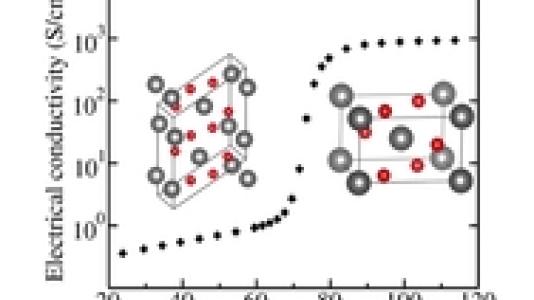
Materials that undergo metal-insulator transitions (MITs) are under intense study, because the transition is scientifically fascinating and technologically promising for various applications. Among these materials, VO2 has served as a prototype due to its favorable transition temperature. While the physical underpinnings of the transition have been heavily investigated experimentally and computationally, quantitative modeling of electronic transport in the two phases has yet to be undertaken. In this work, Center for Nanoscale Materials users from Toyota, working collaboratively with researchers in CNM’s Theory and Modeling and EMMD Groups, establish a density-functional-theory (DFT)-based approach with Hubbard U correction (DFT þ U) to model electronic transport properties in VO2 in the semiconducting and metallic regimes, focusing on band transport using the Boltzmann transport equations. High quality VO2 films were synthesized and the transport quantities measured across the transition, in order to calibrate the free parameters in the model. The experimental calibration of the Hubbard correction term can efficiently and adequately model the metallic and semiconducting phases, allowing for further computational design of MIT materials for desirable transport properties.
By calibrating how strongly electrons interact using experimental measurements from vanadium oxide VO2 films, the metallic and semiconducting behavior can be modeled computationally with density functional theory (DFT). This approach allows for designing materials with desirable electronic transport properties, via doping, with reasonable computational cost. Potential applications lie in the areas of thermochromics, thermal switching, and sensors. CNM’s clean room facility and Lesker sputtering system were critical to synthesis of the VO2 films. The density functional theory and electronic transport calculations were performed using CNM’s high-performance computing cluster, Carbon.
“Electronic transport in VO2—Experimentally calibrated Boltzmann transport modeling”, A. Kinaci et al., Appl. Phys. Lett., 107, 262108 (2015)